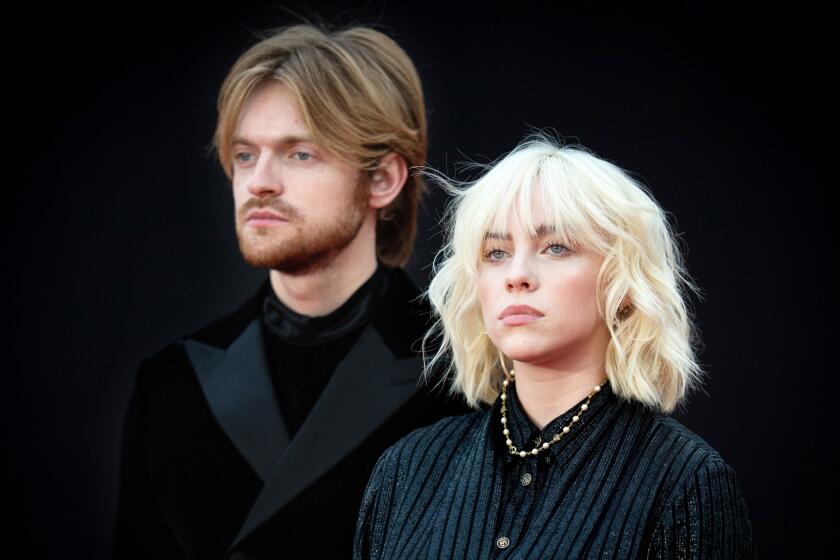Hollywood ignored women. Academy Museum’s female curators aren’t making the same mistake
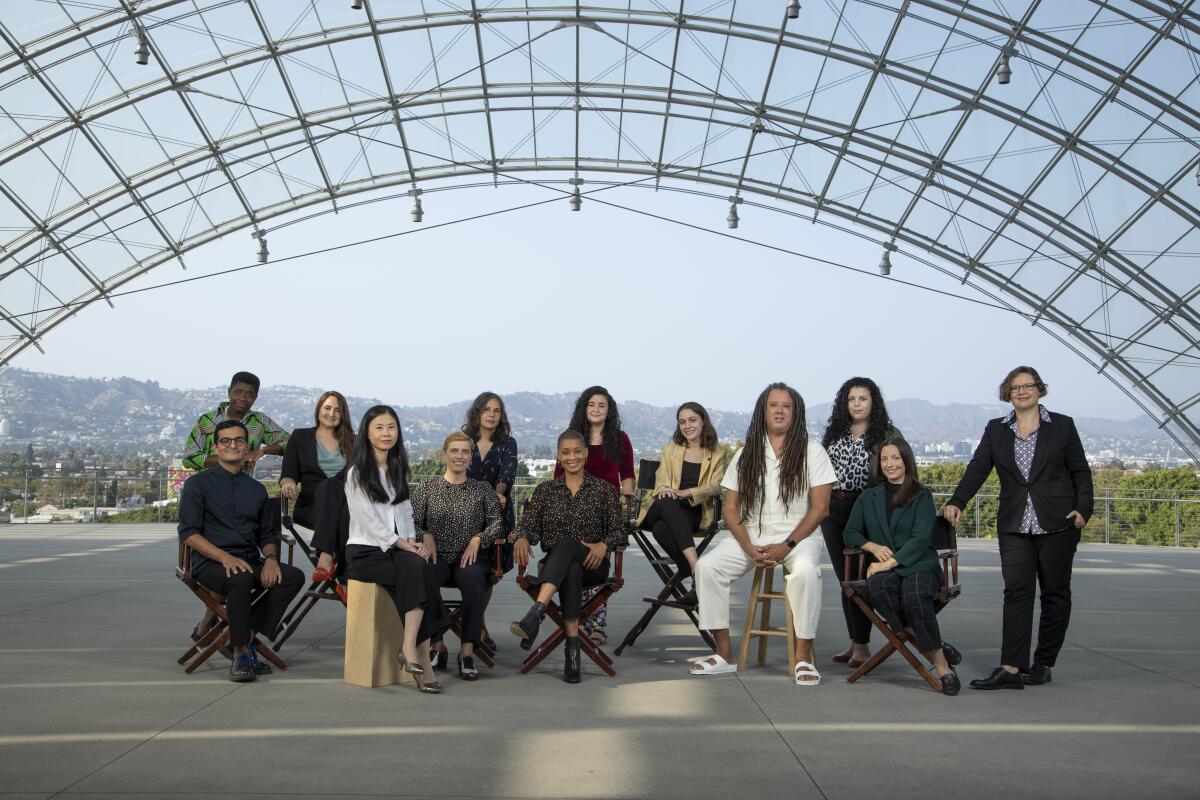
- Share via
During the silent era, there were plenty of female editors. They were called “cutters,” and because the work was meticulous and time-consuming, it was considered akin to sewing, and paid accordingly.
The low wages didn’t deter such women as Blanche Sewell, who spent most of her career in the editing department at MGM after being mentored by Viola Lawrence, who often is credited with being the first female film editor in Hollywood. Sewell went on to edit “The Wizard of Oz.” She also provided behind-the-scenes advice to Walt Disney while he was making “Snow White and the Seven Dwarfs.”
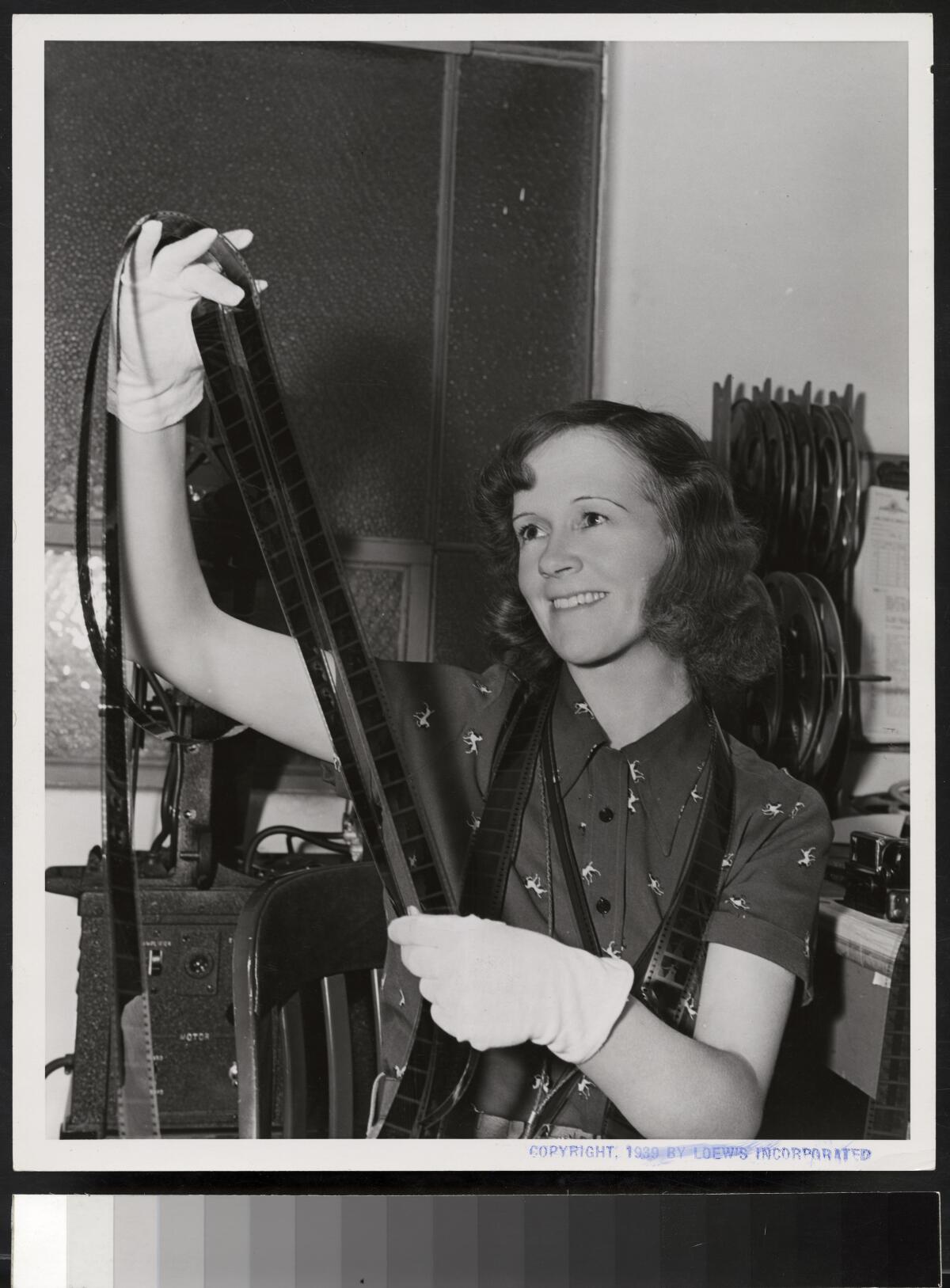
“He had a great respect for her as an editor. He felt she had this impeccable way of cutting to emotion, and he knew that he wanted ‘Snow White’ to be just that,” says Dara Jaffe, an assistant curator at the Academy Museum of Motion Pictures, noting that Sewell was related to Disney by marriage but working at a competing studio. “So he kind of surreptitiously consulted with her after hours.”
That’s actually how Sewell landed the “Oz” job: Producer Mervyn Leroy knew Disney called on Sewell for help, and so he wanted her on his new film.
The result stands among the vertiginous apexes of film history, with Sewell’s editing providing the rhythmic emotion that cements the film’s status as one of the greatest of all time. Sewell is honored in the Academy Museum’s Art of Movie Making Gallery, which opens with “The Wizard of Oz” but will feature rotating films.
Jaffe is sitting on the museum’s terrace with assistant curator Sophia Serrano and senior director of curatorial affairs Doris Berger. The women are part of a 13-person curatorial team that claims only two men in its ranks. As with editing, museum curation is a field that employs more women than men, according to the Assn. of Art Museum Directors — raising interesting possibilities when those women are tasked with highlighting accomplishments in an industry with such a long record of sexism and discrimination.
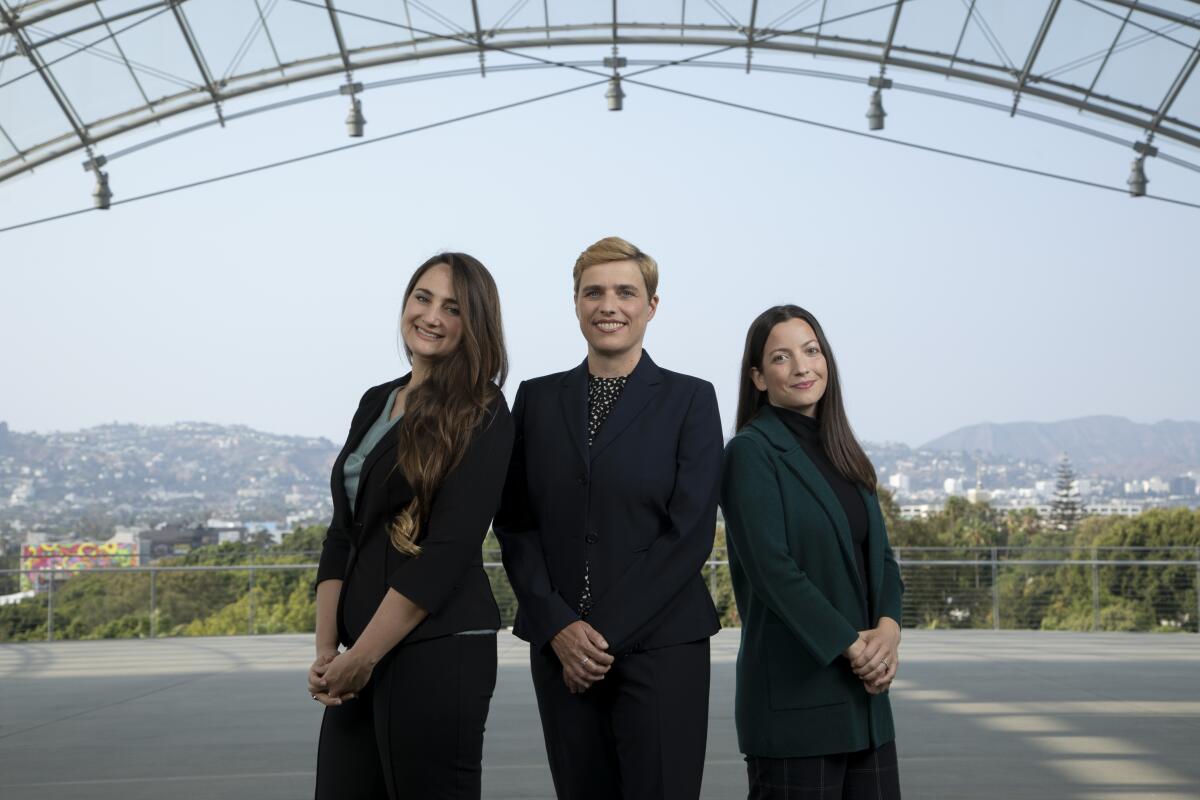
The Hollywood Hills, silhouetted by the fierce late-summer sun, resemble a CGI background as the women discuss some of the overlooked, lesser-known female heroes of film history, and how they — the curators — strove to include their stories in the city’s newest altar to moving pictures.
Early female editors being dismissed as “cutters” is particularly instructive when looking at how women often were marginalized behind the scenes of the cinematic arts, even when their contributions were revolutionary.
When film was very new, women often held powerful roles — as producers, directors and studio heads. Women such as Lois Weber, considered one of the most significant directors and screenwriters working in Hollywood in the early 1900s. She directed more than 135 films and is thought to be the first American female director to own her own studio. Or Anita Loos, the first female staff screenwriter in Hollywood, whose 1925 comic novel, “Gentlemen Prefer Blondes,” provided plenty of steam over decades for Hollywood projects including the legendary version with Marilyn Monroe and Jane Russell.
“There were women in the silent era that were extremely respected and influential and earned a lot of money for that time. However, when sound came in and when the movie industry got more industrialized and powerful, more money got involved,“ Berger says. “I’d say overarchingly, that’s sort of the moment when women got pushed out of that field.”
The Academy Museum of Motion Pictures has opened as the ultimate celebration of Hollywood history, Oscar lore and today’s movie makers.
Over the years, rigorous scholarship has unearthed hidden stories about underappreciated women, Serrano says. Still, when it came time to figure out how to weave those women’s stories into exhibits, unique difficulties arose.
“When you’re a museum that is object-based, you are thinking about the preservation and archive of cinema history,” she says. “Finding significant things that have to do with these women’s history is another challenge — because they aren’t traditionally archived in the same way. The archives might not be valued as highly if it’s coming from a film that’s not appreciated in the same way as canon films made by men.”
When talking about women in film, men come up with disconcerting regularity. Early on, many women made headway in the business because of their husbands. When Jaffe was researching the Black author, film director and independent producer Oscar Micheaux, who is considered the most successful African American filmmaker of the early 20th century, she learned that Micheaux’s wife, Alice B. Russell, produced a number of his films.
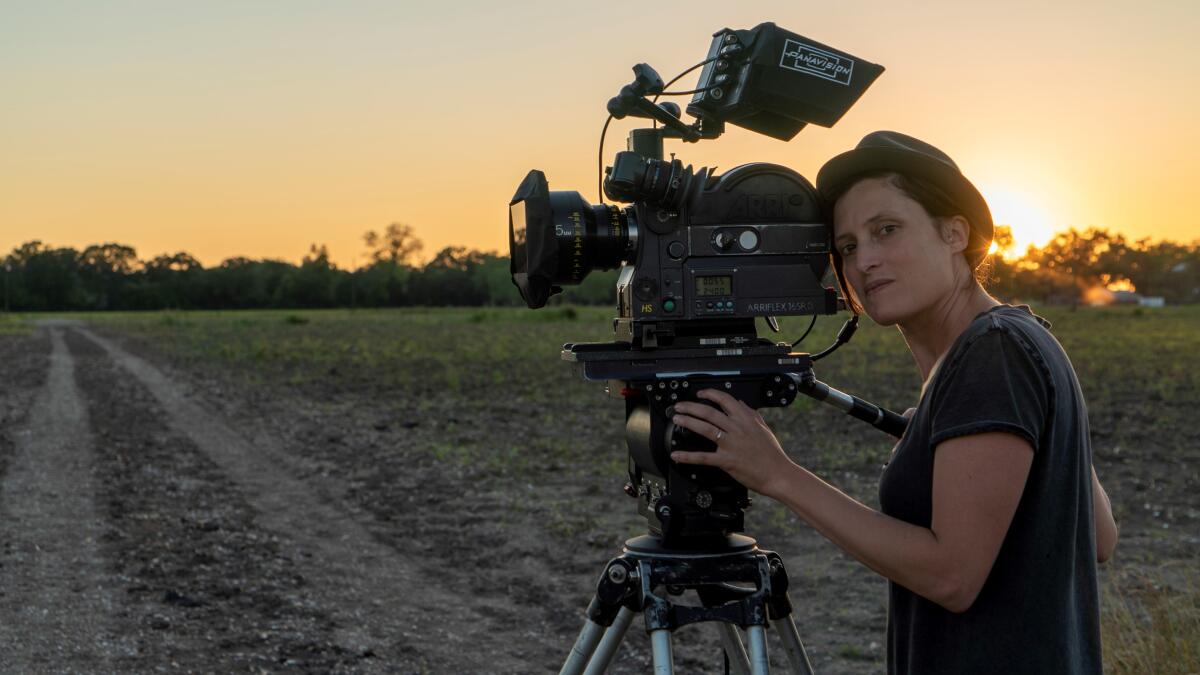
“That most likely makes her the earliest Black female producer,” says Jaffe, adding that women who worked with their husbands often had their work attributed to those men. “So with Oscar Micheaux, we went out of our way to honor Alice B. Russell. That was a very conscious choice.”
The dynamic has shifted at a glacial pace but appears to be improving faster lately: Such women as Rachel Morrison are cinematographers for tent-pole action films like “Black Panther,” and others, like production designer Hannah Beachler, can command a $30-million art budget to create the fantastical kingdom of Wakanda. Beachler is meticulous when it comes to research, Berger says, and her work shines through her use of color, light, form, style and texture. She is, Berger says, a master.
There is not yet a “Black Panther” gallery at the Academy Museum, but Morrison and Beachler are represented throughout the building, including in a section featuring 27 notable Oscar acceptance speeches. Beachler is featured through her words after becoming the first Black woman to win an Oscar for production design. In the Image Gallery, which features film montages with cinematographers, Morrison speaks about her work. Morrison, Serrano says, is brilliant at balancing over-the-top action sequences with intimate moments of deep humanity.
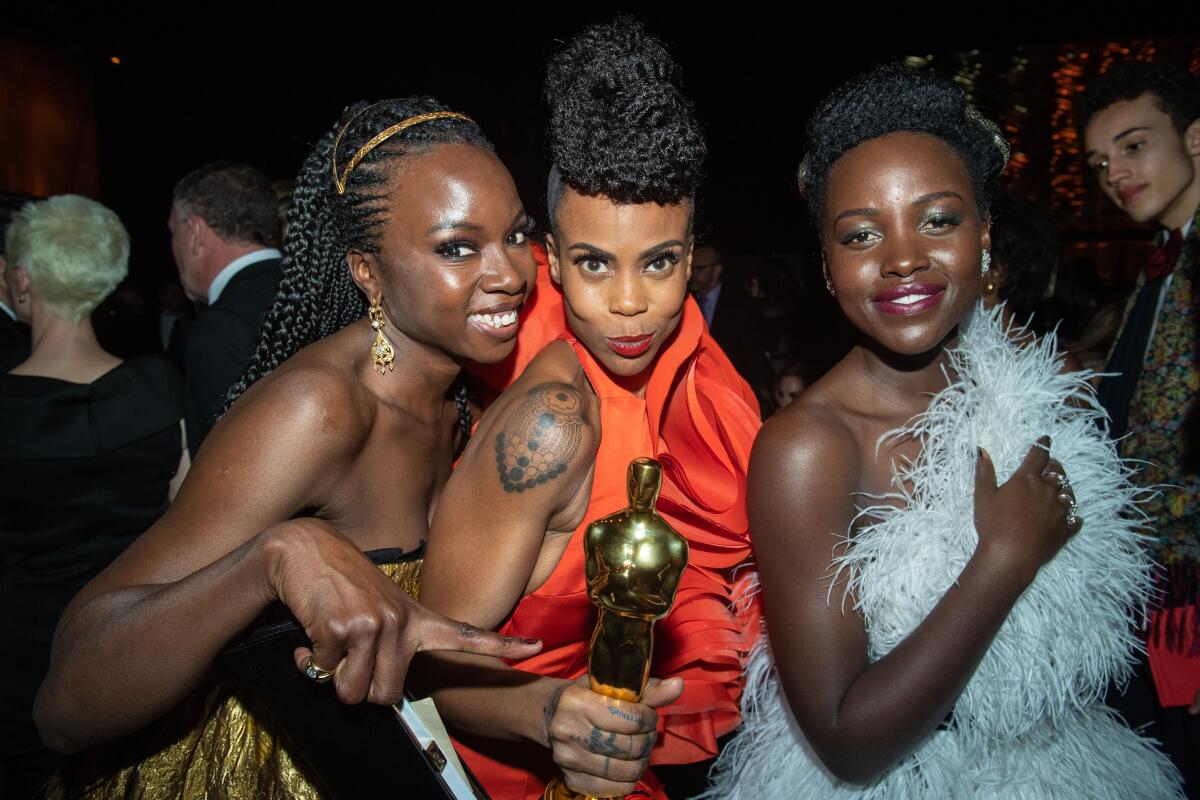
“Traditionally, when you’re thinking of women behind the camera, it is more documenting. It’s more of the social-problem film, and so I really wanted to make a conscious decision with Rachel to pick the epic — the intersection of gender and fantasy,” Serrano says. “You have Rachel and Hannah, and you have this notion of, ‘whose fantasy?’ Because in fantasy and world building, the presence of women is even lower.”
Women are also less represented in animation, the curators note. Jaffe cites a study conducted by the USC Annenberg Inclusion Initiative showing that women are the majority enrolled at animation schools and often dominate at festivals, but their numbers drop significantly when they enter the industry. According to that study, 3% of animated films are directed by women and 1% by women of color.
The Academy Museum’s animation gallery includes a fascinating German woman named Lotte Reiniger, who in 1926 made the first surviving animated feature film, “The Adventures of Prince of Achmed.” Many cinephiles would wrongly assume the honor belongs to the 1937 classic “Snow White.”
Reiniger was a pioneer of silhouette animation, and she invented an early prototype of a multiplane camera, the kind that Disney later became famous for using. She called it her “trick table.”
Her early tables were made of wood, Jaffe says, which Reiniger preferred to metal because useful tools could be pinned to it. A light source at the bottom pointed up through layers of glass outfitted with cutouts of scenery. Reiniger achieved shading and a 3-D effect by layering tissue paper. The camera was mounted at the top and pointed down.
Stop-motion in the 1920s was painstaking, Jaffe says, and Reiniger had to manually expose every single frame. She was known for remarkable dexterity when it came to moving her shadow puppets, which she made from all manner of materials including discarded cardboard and old soap boxes.
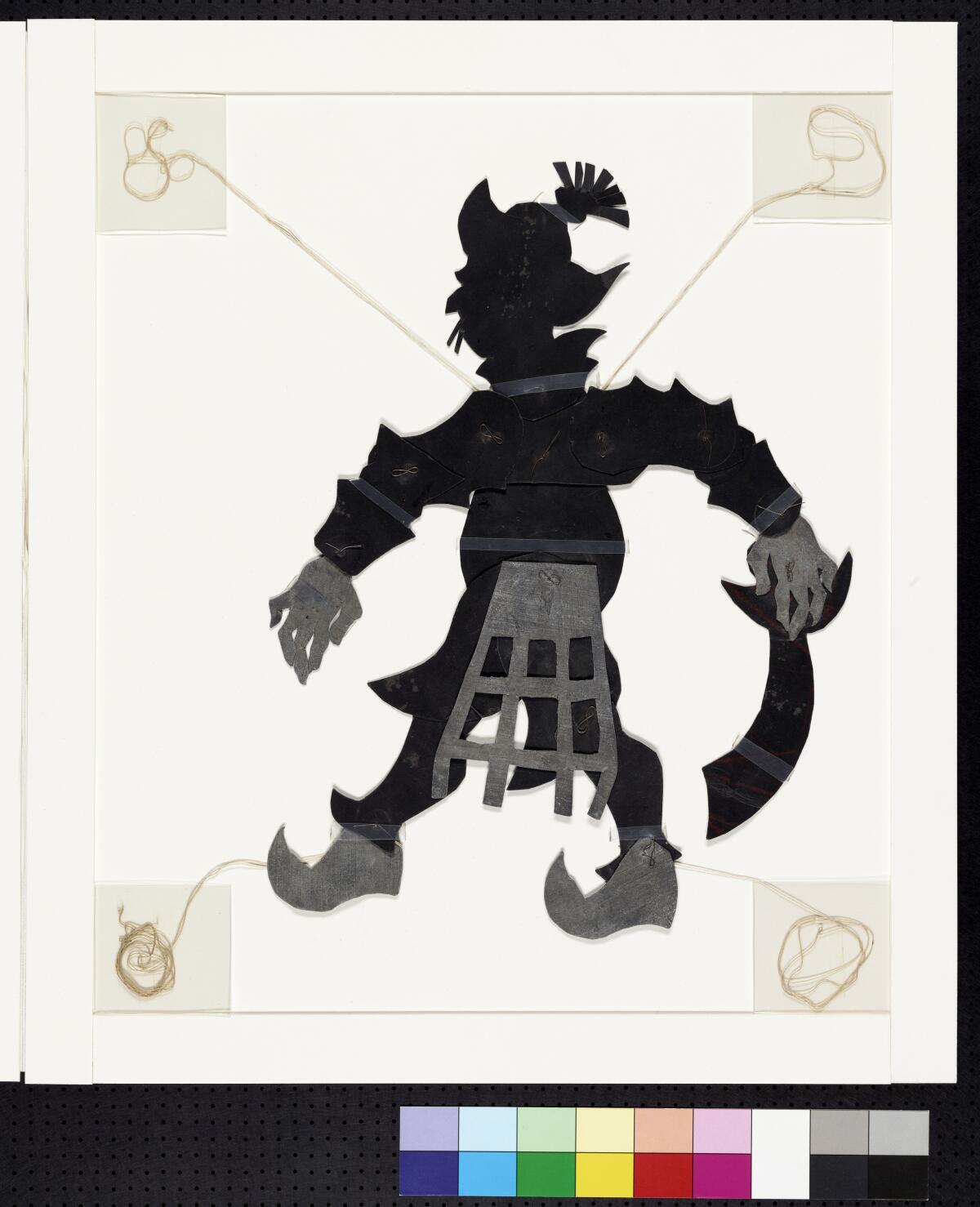
“They said she was always cutting,” Jaffe says. “If she got her hands on something, she would start cutting it.”
Jaffe also heard that Reiniger put on a play as part of a school project and didn’t think any of the actors were good enough, “So she said, ‘I’m going to cut my own puppet; I can get more emotion from this puppet than any of my colleagues.’”
A surviving shadow puppet from “The Adventures of Prince Achmed” will be on display in the animation gallery before moving into storage in the academy’s Margaret Herrick Library.
No story of underappreciated female film heroes would be complete without mention of wildly creative Japanese art director, costume designer and graphic designer Eiko Ishioka, who became the first Asian woman to win an Oscar for costume design for her work on Francis Ford Coppola’s 1992 film, “Bram Stoker’s Dracula.”
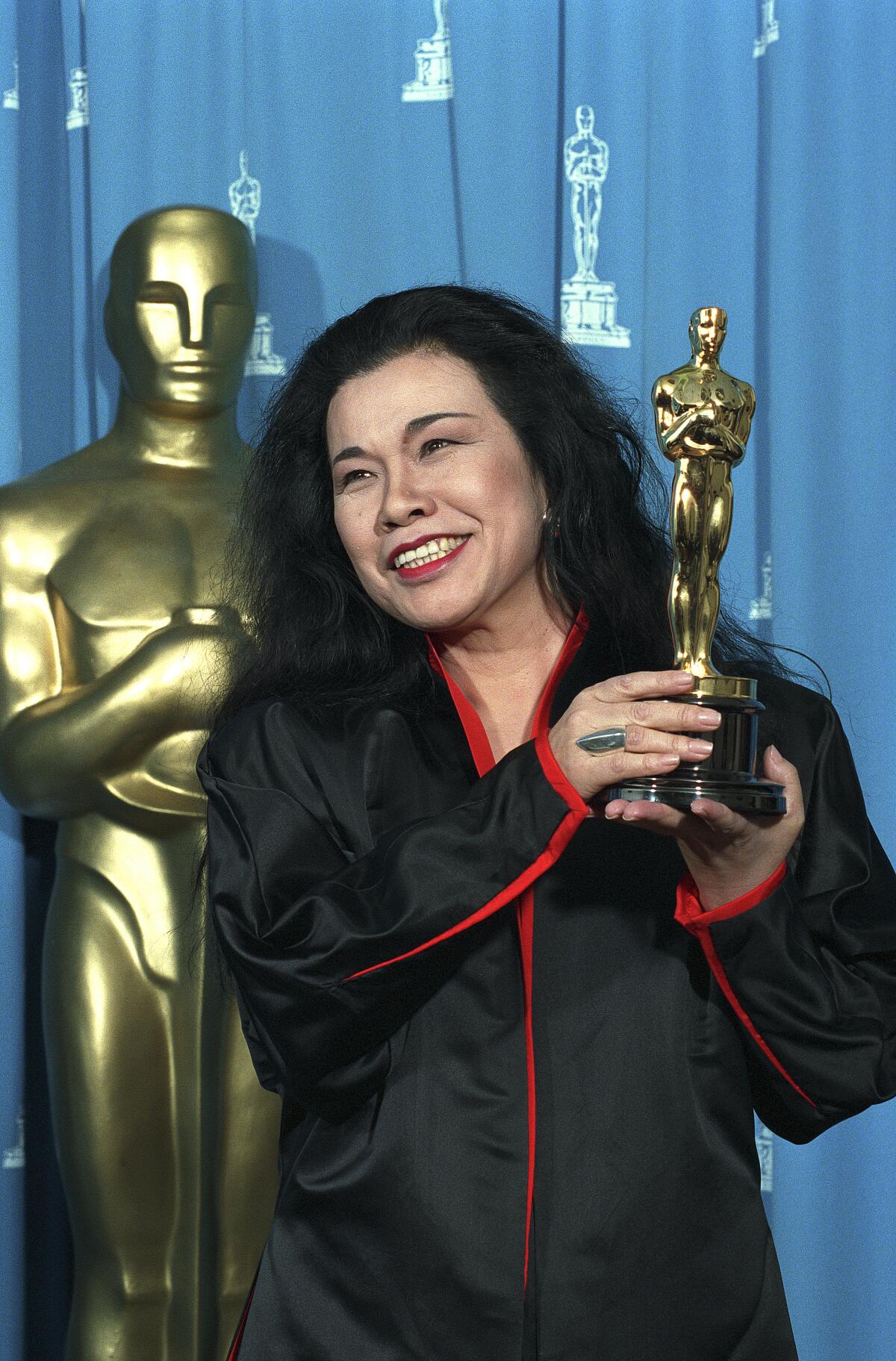
Ishioka was a successful graphic designer and businesswoman in Japan, known for creating edgy images of female liberation in commercial advertising against the backdrop of New Wave cinema in the 1960s. She came to Hollywood after Coppola saw the Japanese version of a poster she made for “Apocalypse Now” and decided he needed to meet her. (Coincidentally, Ishioka’s “Apocalypse Now” poster is in the museum’s Spike Lee exhibition as an object that inspired him.)
Coppola and Ishioka became collaborators, and he hired her to design the costumes for Dracula. According to Serrano, Coppola invested a significant portion of his budget in the costumes. In a documentary about the making of the film, Coppola says he wanted the costumes to be the jewels of the sets.
Under Ishioka’s astute direction, they achieved the necessary heft. Her creations, Serrano says, are like 3-D constructions — all strong lines and colors, made of solid materials from intricately detailed illustrations.
“She just has such a strong aesthetic point of view; once you’re aware of her style, if you see a piece that’s hers, you know its hers,” says Serrano.
The museum has one of Dracula’s robes. In the film, viewers only get the smallest glimpse of it. Dracula emerges from his coffin wearing it, and then he changes. But that robe! It’s gold patchwork, inspired by Gustav Klimt’s “The Kiss” and Byzantine mosaics.
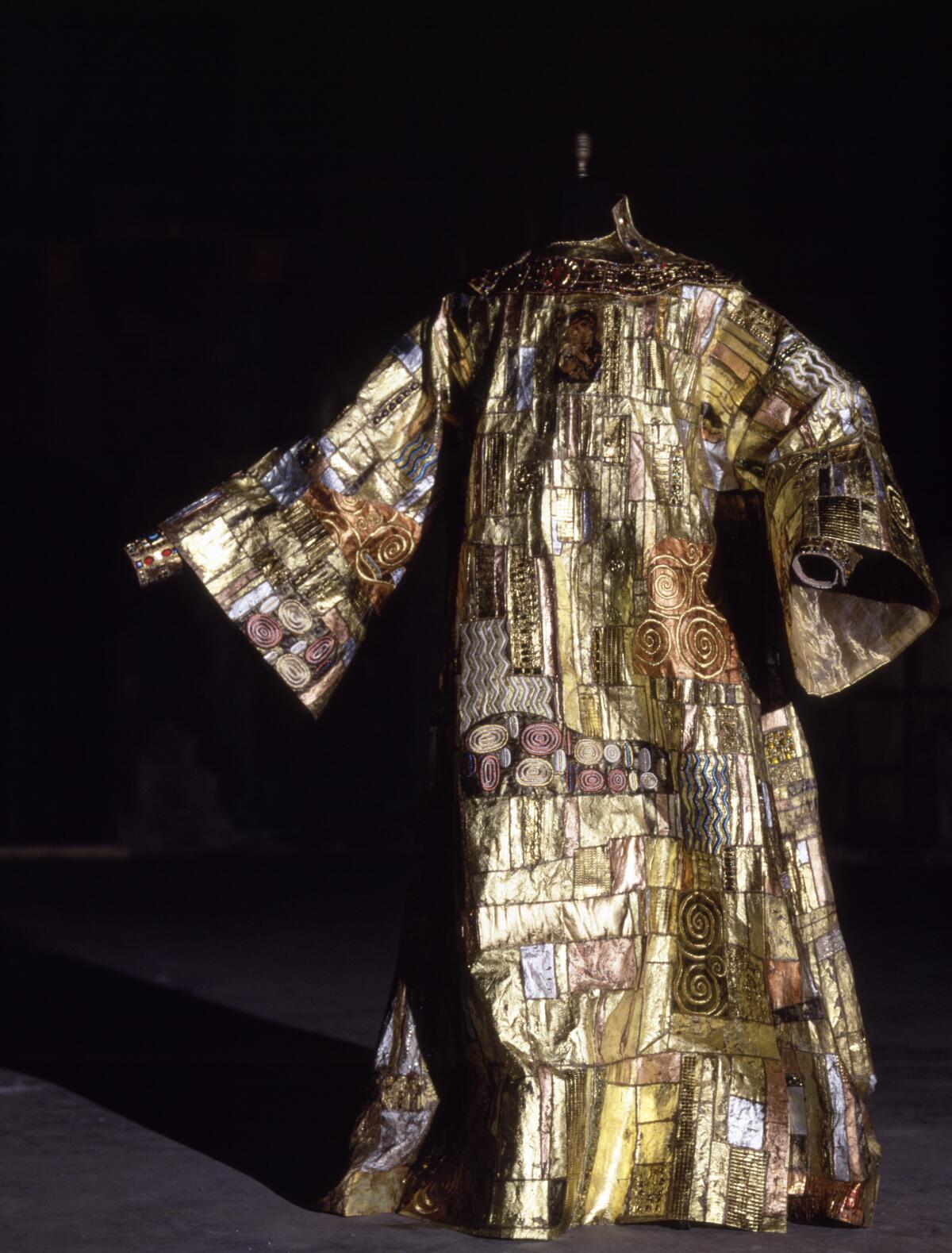
“You have a Madonna and child printed on the front, and these details that you would never necessarily see in the movie,” Serrano says. “You would never know how heartbreakingly beautiful this is in person.”
Piecing together the stories of women in film — much like piecing together Dracula’s robe — took time, thought and energy, with a sense of balance that both celebrated achievements and helped to raise the profiles of unsung female heroes.
“Curating is not just selecting in a vacuum, it is also the combination of stories you are telling and what happens in between that space,” Berger says. “That’s why it’s so important that we are aware of multiple perspectives, and representation in a larger sense — not just gender, but also sexuality and race and abilities, all of that played a part in our discussions.”
More to Read
The biggest entertainment stories
Get our big stories about Hollywood, film, television, music, arts, culture and more right in your inbox as soon as they publish.
You may occasionally receive promotional content from the Los Angeles Times.









